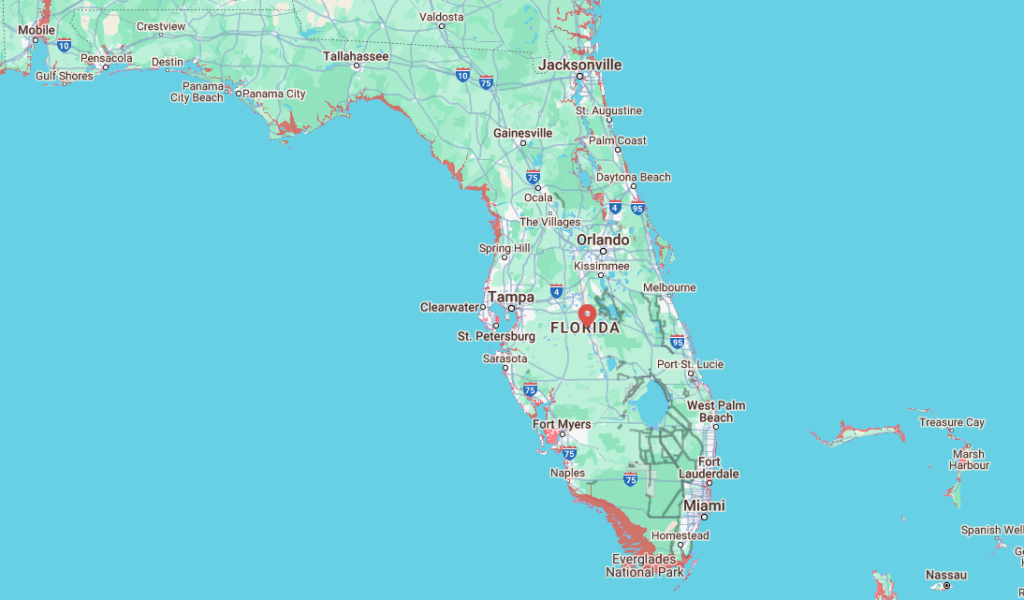A new map reveals which areas of Florida are most vulnerable to sea-level rise and increased flooding due to climate change.
Created by Climate Central researchers, the map uses advanced predictive modeling to identify regions that could face significant risk by 2050. Florida, with its vast coastline and low-lying topography, is one of the states most susceptible to rising sea levels.
The map highlights that coastal areas in southern Florida are particularly at risk, including state parks, reserves, and the Florida Keys. Parts of the southwestern coast, such as the Everglades National Park—which spans over 1.5 million acres and is home to diverse wildlife—could be entirely submerged.
Cape Coral’s outer coastal areas, including its extensive canal network, would also face potential inundation.
The eastern coast of Florida would not be spared, with parts of Fort Lauderdale, especially the Las Olas Isles waterfront neighborhood, predicted to be partially submerged. Similarly, parts of Jacksonville along rivers and waterways will experience significant water encroachment.
Miami and Tampa, while less severely affected, could still see some water intrusion into their green coastal areas based on the map’s projections.
According to the National Oceanic and Atmospheric Administration, the sea level along the U.S. coastline is expected to rise by 10 to 12 inches on average by 2050—equivalent to the total rise recorded from 1920 to 2020.
“People living on low-lying coastal land, like river mouths, are already facing higher flood risks because of the 20-40 cm [7.9—15.7 inches] of sea level rise observed along U.S. coasts over the past few decades. Their communities can expect the worst impacts as water levels continue to rise,” Peter Girard, spokesperson for Climate Central, told Newsweek.
Ben Strauss, president and CEO of Climate Central, wrote that by 2050, large parts of the United States are likely to experience storm surges combined with sea-level rise of at least five feet.
South Florida, in particular, is highly vulnerable, as around 2.4 million people and 1.3 million homes—almost half of the national risk—are situated within four feet of the high tide line. Strauss noted, “Overall, sea level rise is making the odds of a South Florida flood reaching more than 4 feet above high tide by 2050 comparable to the odds of losing at Russian roulette.”
